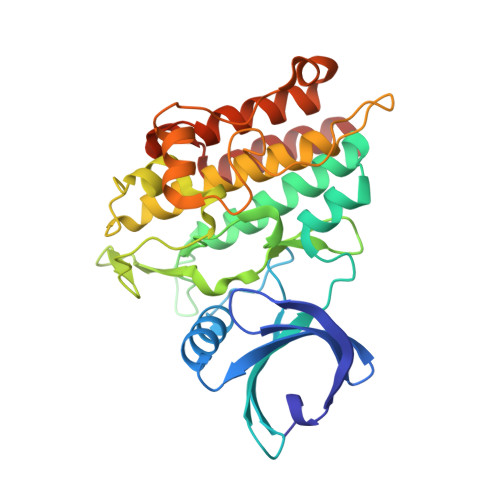Selection of fragments for kinase inhibitor design: decoration is key.
Czodrowski, P., Holzemann, G., Barnickel, G., Greiner, H., Musil, D.(2015) J Med Chem 58: 457-465
- PubMed: 25437144
- DOI: https://doi.org/10.1021/jm501597j
- Primary Citation of Related Structures:
4X0M, 4X2F, 4X2G, 4X2J, 4X2K, 4X2N, 4X3J - PubMed Abstract:
In fragment-based screening, the choice of the best suited fragment hit among the detected hits is crucial for success. In our study, a kinase lead compound was fragmented, the hinge-binding motif extracted as a core fragment, and a minilibrary of five similar compounds with fragment-like properties was selected from our proprietary compound database. The structures of five fragments in complex with transforming growth factor β receptor type 1 kinase domain were determined by X-ray crystallography. Three different binding modes of the fragments are observed that depend on the position and the type of the substitution at the core fragment. The influence of different substituents on the preferred fragment pose was analyzed by various computational approaches. We postulate that the replacement of water molecules leads to the different binding modes.
Organizational Affiliation:
Discovery Technologies, Merck Serono Research, Merck Serono R&D, Merck KGaA , Frankfurter Strasse 250, 64293 Darmstadt, Germany.















